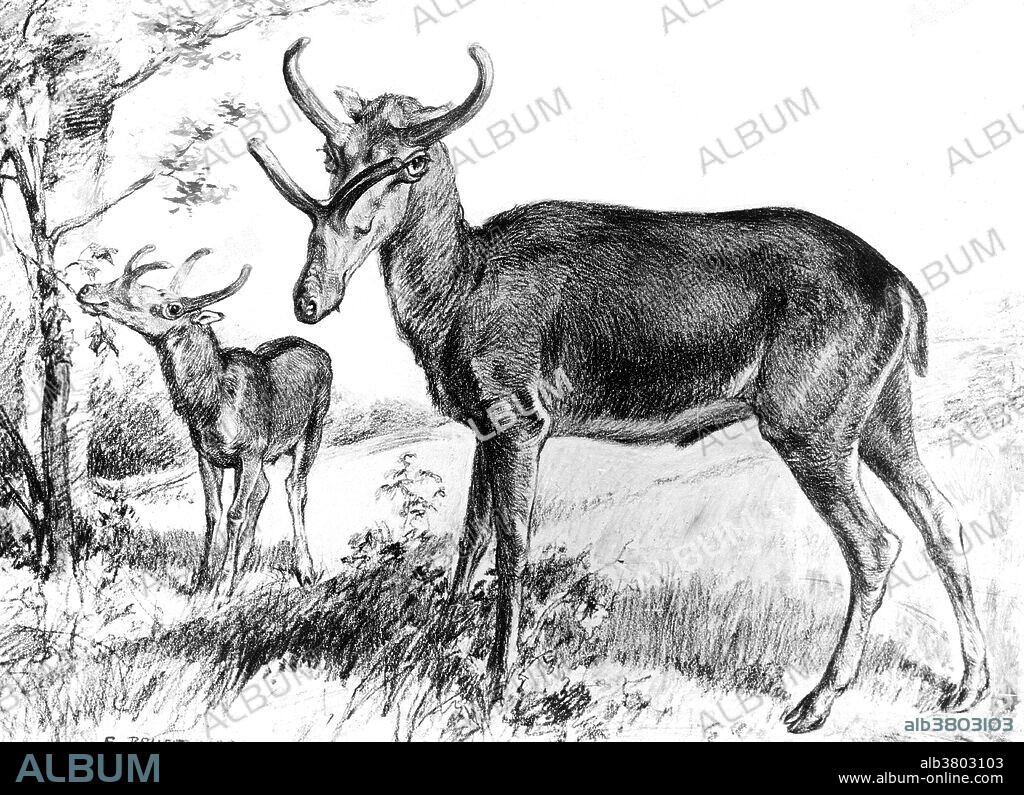alb3803103
Syndyoceras, Miocene Mammal

|
Añadir a otro lightbox |
|
Añadir a otro lightbox |



¿Ya tienes cuenta? Iniciar sesión
¿No tienes cuenta? Regístrate
Compra esta imagen.
Selecciona el uso:

Título:
Syndyoceras, Miocene Mammal
Descripción:
Ver traducción automática
Syndyoceras is a small extinct genus of Artiodactyla endemic to central North America from the Miocene epoch existing for approximately 4 million years. Although it looked like a modern deer, Syndyoceras was only a remote relative. This megafauna mammal was an even-toed ungulate, but it belonged to an obscure sub-family of this breed, the protoceratids, the only living descendants of which are camels. Syndyoceras males had a pair of large, sharp, cattle-like horns behind the eyes, and a smaller pair, in the shape of a V, on top of the snout. The horns also existed on females, but in much smaller proportions. They had large, tusk-like canine teeth, which it probably used while rooting for vegetation. Illustration originally captioned: A four horned Miocene deer, after Scott by Robert Bruce Horsfall. American Museum of Natural History. No date.
Crédito:
Album / USGS/Science Source
Autorizaciones:
Tamaño imagen:
4800 x 3477 px | 47.7 MB
Tamaño impresión:
40.6 x 29.4 cm | 16.0 x 11.6 in (300 dpi)
Palabras clave:
ANIMAL • ANIMALES CON PEZUÑAS • ANIMALIA • ARTE • BLANCO Y NEGRO • CHORDATA • CON CUERNOS • DIBUJO • EDAD • EXTINCIÓN • EXTINGUIDO • FAUNA • HERBIVORO • HISTORIA • HISTORICO • ILUSTRACION • MAMIFERO • MAMÍFEROS • MIOCENO • OBRA DE ARTE • PALEOBIOLOGIA • PALEONTOLOGIA • PERIODO • PREHISTORIA • PREHISTORICO • VERTEBRADO
 Pinterest
Pinterest Twitter
Twitter Facebook
Facebook Copiar enlace
Copiar enlace Email
Email
